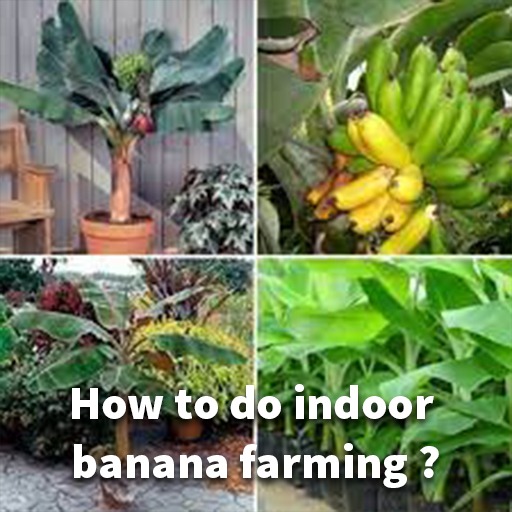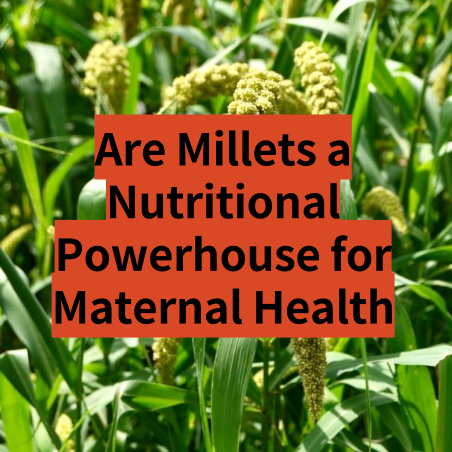Some banana plant species can be cultivated inside, even if you don’t believe you can grow a fruit-producing indoor banana farming tree in your own house. One such plant that may thrive in an indoor banana farming setting is Musa acuminata, a miniature banana tree. It seems like a wonderful experience if you could eat fresh, ripe bananas straight from the plant. Wow, what a treat!
The best Indoor banana Farming Techniques:
Some bananas are too big to grow inside, while others are ideal for the garden. To help you out, we’ve included the following:
Dwarf Cavendish
Cavendish cultivars such as the Dwarf Cavendish indoor banana farming are extensively farmed and economically beneficial. The term “Dwarf Cavendish” refers to the height of the pseudostem rather than the fruit. Early in their growth cycle, the leaves of young plants show maroon or purple spots. However, they disappear as the plant matures.
This plant is small, grows quickly, and is easy to clean and maintain. It’s a manageable size for a home.
Dwarf Brazillian
The sweetness of this variety makes it an excellent substitute for the more common Cavendish. Despite its small stature, the Brazilian Dwarf Banana Tree has large leaves that are ideal for giving shade and are resistant to burns from overexposure to sunlight.
During the autumn, their leaves become a bright yellow. A cluster of dwarf Brazilian banana plants gives your backyard a substantial amount of shade.
The Brazilian Dwarf Banana tree is resistant, robust, and cold-tolerant and has excellent wind resistance.
Dwarf Lady Finger
They’re quite small, delicate fruits, and quite tasty. They’re ideal for doing indoor banana farming. The “Lady Finger” banana plant’s “dwarf” type provides a tropical flair to any home. As a container plant, it’s simple to take care of since it only grows to a height of 5 feet. If you live outside the banana plant’s hardiness zone or don’t have access to a garden, dwarf lady finger bananas can be grown indoors.
Small Red Dwarf
It has small, sweet, and creamy fruit. The fruit ripens to a light orange-pink color with a skin color change from maroon to orange and juicy flesh. Wide red-skinned banana varieties, including Dwarf Red, are among the most attractive indoor banana farming plants.
This banana tree produces a medium-sized bunch of bananas that become dazzling crimson and gold when fully ripe. The pulp is creamy and orange in color, and the fruit has a pleasant scent.
Planting and caring for a banana tree indoors
Here are a few pointers for indoor banana farming.
Soil
These plants thrive in soil rich in organic farming, have adequate drainage, and have a pH that leans toward the acidic side. Salty soil is usually a problem for them.
Light requirement
Although certain indoor banana farming plants may flourish inside, they still need a lot of sunlight. For the most part, Banana trees need at least 12 hours of direct sunlight each day, which is difficult to attain in many indoor environments.
It is best to allow indoor banana farming plants to spend some time outside in direct sunlight when the temperature is over 80 degrees Fahrenheit.
To develop fruit, indoor banana plants should be given as much light as possible. After three or four years, they may begin to bloom, a sign that they may bear fruit in the future.
Fertilizing banana plants
In the spring and autumn, indoor banana farming plants need a lot of fertilizer to grow properly. Water-soluble fertilizer should be used weekly throughout this period to provide a well-balanced diet for the plants’ growth. Each fertilizer has a certain NPK ratio, which represents the amount of nitrogen (N), phosphorus (P), and potassium (K) (K). It’s best if you find a fertilizer with an NPK of at least 10- 10-10.
Banana trees, like many other plants, are susceptible to overfertilization. Burnt leaf tips are one of the most common symptoms of overfertilization. Fertilizer should be diluted to 50% to prevent over-fertilization.
The ideal temperature and humidity
The best conditions for indoor banana farming are hot and humid. Suppose you’re looking to grow indoor banana farming. In that case, you’ll want to keep the night temperature at 67 degrees Fahrenheit (19 degrees Celsius) and the day temperature in the 80s (26 C.). Indoor Banana farming plants may be moved outside in the warmer months if the temperature stays within this range every day. Remember that these plants are not tolerant of strong winds; therefore, they should be kept in a well-protected location from extreme weather.
They need shelter to stay warm and dry. Plants should be acclimated before being brought inside as the temperature cools and right after being left out in the sun during warm weather. Rolling platforms might make it simpler to move plants.
Watering indoor banana plants
Banana plants, particularly those cultivated indoors, need a lot of water. Keep the soil around them always wet since they are especially vulnerable to dryness. Banana plants’ broad, drooping leaves make it simple to see when they’re being under-watered.
Remember that if the rhizomes of banana plants are allowed to remain submerged in water for an extended period, root rot may occur. To get the best results, give the plant plenty of water and let it drain completely. Don’t allow any water to accumulate in the saucer. If you mist their leaves, it will help them stay hydrated and happy.
Pests and infections
The banana borer, or weevil, is the most common problem with banana trees (Cosmopolites sordidus). This pest makes tunnels at the basal and rhizome ends, allowing it to penetrate. The banana plant is severely damaged as a result of this.
But if your banana plant is kept indoors, there is very little possibility that this borer will attack it. Pick out any foreign organisms you find as soon as possible.
Transplanting a banana plant indoors
Your first harvest will be more successful if you use live starting plants. It’s best to buy a bushy plant from a garden center and inspect it closely for pests. For it to thrive, there should be no spots, holes, or curls on the deep green leaves of the plant. It’s a good idea to put it in “quarantine” for a week to ensure it’s free of pests.
If your seedling is free of pests and disease, it’s ready to go on to the next step.
- Remove some dirt from the final planter so the seedling can grow with its bottom slightly above the soil level.
- To remove the seedling from the pot, turn it upside down with one hand and carefully remove it. The pot can be dislodged by gently squeezing it.
- A tight but not compacted soil mixture should be placed in the final container before planting.

The process of pollinating bananas
Banana plants produce their own fruit, so pollination is not required. The flower stalk may be trimmed below the growing banana cluster if it becomes unattractive. Bananas typically take 3 to 5 months to reach maturity after flowering.
Conclusion
Taking care of a banana plant indoors may seem difficult initially, but if you carefully apply the advice in this article, you will likely succeed. Always supply fundamental growth conditions and follow care and maintenance techniques. Eventually, you’ll have a lush banana plant inside your house, giving it the perfect tropical feel.












